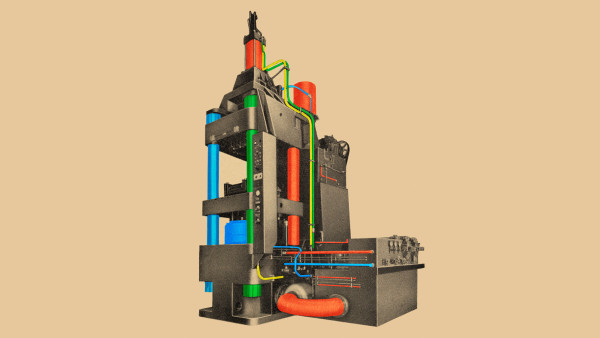
HBR: What startup accelerators really do
By Ian Hathaway for Harvard Business Review,
The well-advertised boom in startups and venture capital in recent years has coincided with the emergence of new players in startup ecosystems. One of these, startup accelerators, has received a great deal of attention but also little scrutiny.
Moreover, they are commonly misunderstood or mistakenly lumped in with other institutions supporting early-stage startups, such as incubators, angel investors, and early-stage venture capitalists.
In a recent analysis published by the Brookings Institution, I tackle some of the confusion around startup accelerators by laying out a clearer picture of what they do, and how they differ from other early-stage institutions. I also provide a review of the research literature on the effectiveness of accelerators to achieve their stated aims, some best practices for accelerator programs, and some figures on the size, scope, and impact of these organizations in the United States.
Accelerators are playing an increasing role in startup communities throughout the United States and beyond. Early evidence demonstrates the significant potential of accelerators to improve startups’ outcomes, and for these benefits to spill over into the broader startup community. However, the measurable impact accelerators have on performance varies widely among programs — not all accelerators are created equally. Quality matters.

Accelerators in the United States
Silicon Valley–based Y Combinator launched the first seed accelerator program, in 2005, in Boston, followed closely by TechStars, which was founded the next year in Boulder, Colorado. Both programs have evolved over the years and have traditionally been considered the two premier accelerator programs globally.
Growth in U.S.-based accelerators really took off after 2008, as it did for startups, early-stage capital, and venture investment more broadly. The number of U.S.-based accelerators increased by an average of 50% each year between 2008 and 2014.
 I was able to identify 172 U.S.-based accelerators in existence during the 2005–2015 period. Collectively, they invested in more than 5,000 U.S. startups. During this period, these companies have raised a total of $19.5 billion in funding, a number that will surely increase as accelerator programs continue to turn out companies and recent graduates work their way to maturity.
I was able to identify 172 U.S.-based accelerators in existence during the 2005–2015 period. Collectively, they invested in more than 5,000 U.S. startups. During this period, these companies have raised a total of $19.5 billion in funding, a number that will surely increase as accelerator programs continue to turn out companies and recent graduates work their way to maturity.
Accelerator graduates that went on to raise additional venture capital investment had a median valuation of $15.6 million during this period, and an average valuation of $90 million. Some very well-known companies belong to this group, including “unicorns” AirBnB, Dropbox, and Stripe, among others.
Why Startup Accelerators
Accelerators have clearly taken hold in recent years. But what is it about what accelerators do that makes them so different from other early stage investors and support organizations and so valuable to the startups that are apparently falling over each other to be in their ranks?
I recently posed this question to Brad Feld, a cofounder of TechStars, and he likened the accelerator experience to immersive education, where a period of intense, focused attention provides company founders an opportunity to learn at a rapid pace. Learning-by-doing is vital to the process of scaling ventures, and the point of accelerators, suggests Feld and others, is to accelerate that process. In this way, founders compress years’ worth of learning into a period of a few months.
Feld’s explanation seems sensible to me, but what evidence is there? The relative novelty of accelerators means that little systematic research exists on the effect they have on the participating companies and on the broader startup community. Four papers stand out as contributing to our understanding. Here’s what they’ve found:
- When matched with a comparable group of companies that didn’t participate in accelerator programs, those that graduated from top programs saw an acceleration in reaching key milestones, such as time to raising venture capital, exit by acquisition, and gaining customer traction. However, these positive effects dissipate when looking at a broader sample of accelerators: many programs do not seem to accelerate startup development, and in some cases may even slow them down.
- A comparison of graduates of top accelerators with a set of similar startups that instead raised angel funding from leading angel investment groups found that the accelerator graduates were more likely to receive their next round of financing significantly sooner and were more likely to be either acquired or to fail.
- Additional research indicates the channels through which accelerators aid venture development, demonstrating that it is primarily about learning in the accelerator experience, not potentially confounding factors such as credential signaling to future investors, selection bias, or previous founder experience at top companies. In other words, the value of accelerators seems real and likely comes from the intensive learning environment itself.
- Accelerators have a positive impact on regional entrepreneurial ecosystems, particularly with regard to the financing environment. Metropolitan areas where an accelerator is established subsequently have more seed and early-stage entrepreneurial financing activity, which appears not to be restricted to accelerated startups themselves, but spills over to non-accelerated companies as well — occurring primarily from an increase in investors.
To summarize, accelerators can have a positive effect on the performance of the startups they work with, even compared with other key early-stage investors. But this finding is not universal among all accelerators and so far has been isolated to leading programs. Early evidence also shows that accelerators may have a positive effect on attracting seed and early-stage financing to a community, bringing spillover benefits to the wider regional economy.
Considering the growth of accelerators in recent years, this evidence is encouraging. By and large, accelerators seem to be a positive addition to startup ecosystems across the country and the world. Some may not make much of a difference, but many clearly do, and the best ones are poised to meaningfully improve the odds of success for the startups that graduate from them
The article first appeared in Hbr.com




